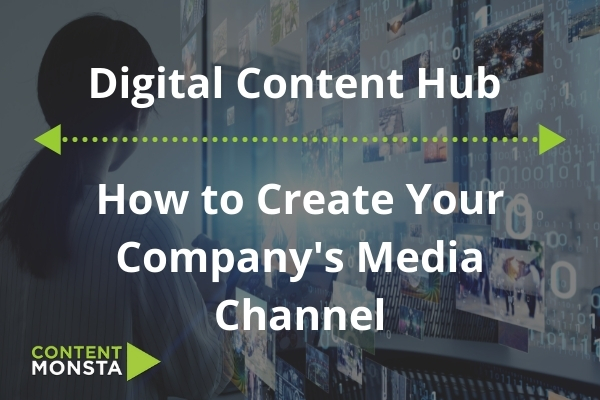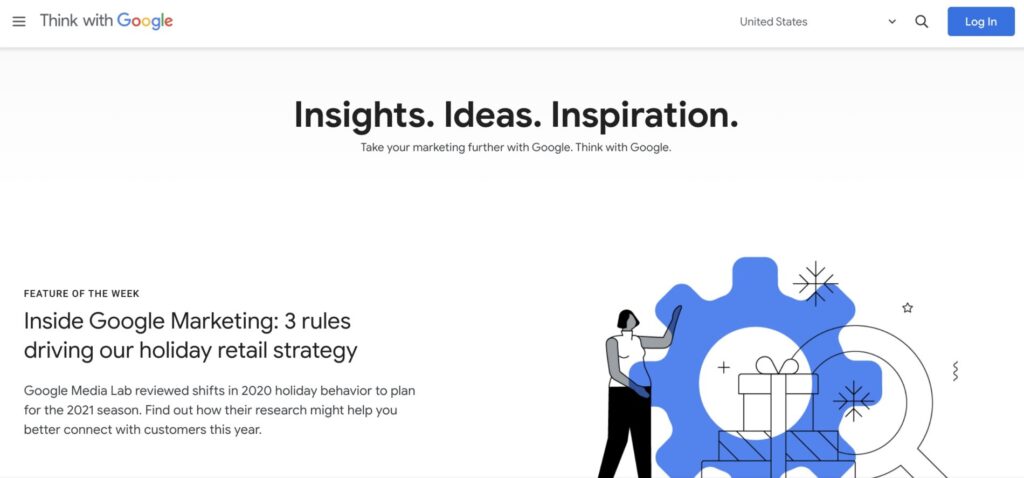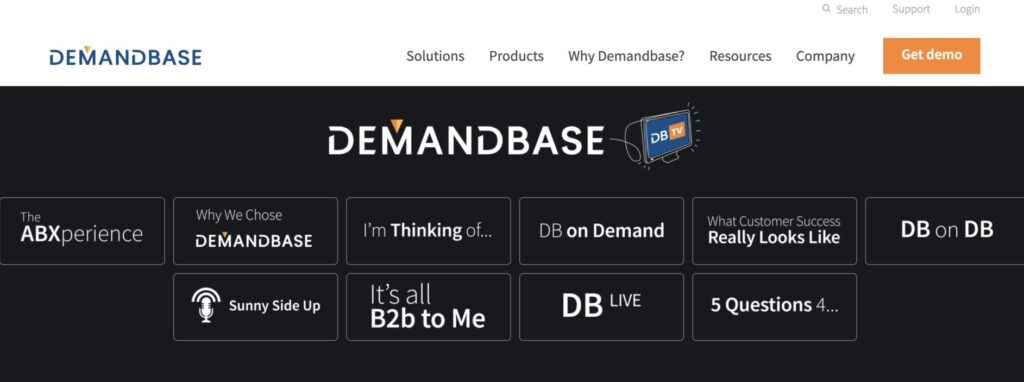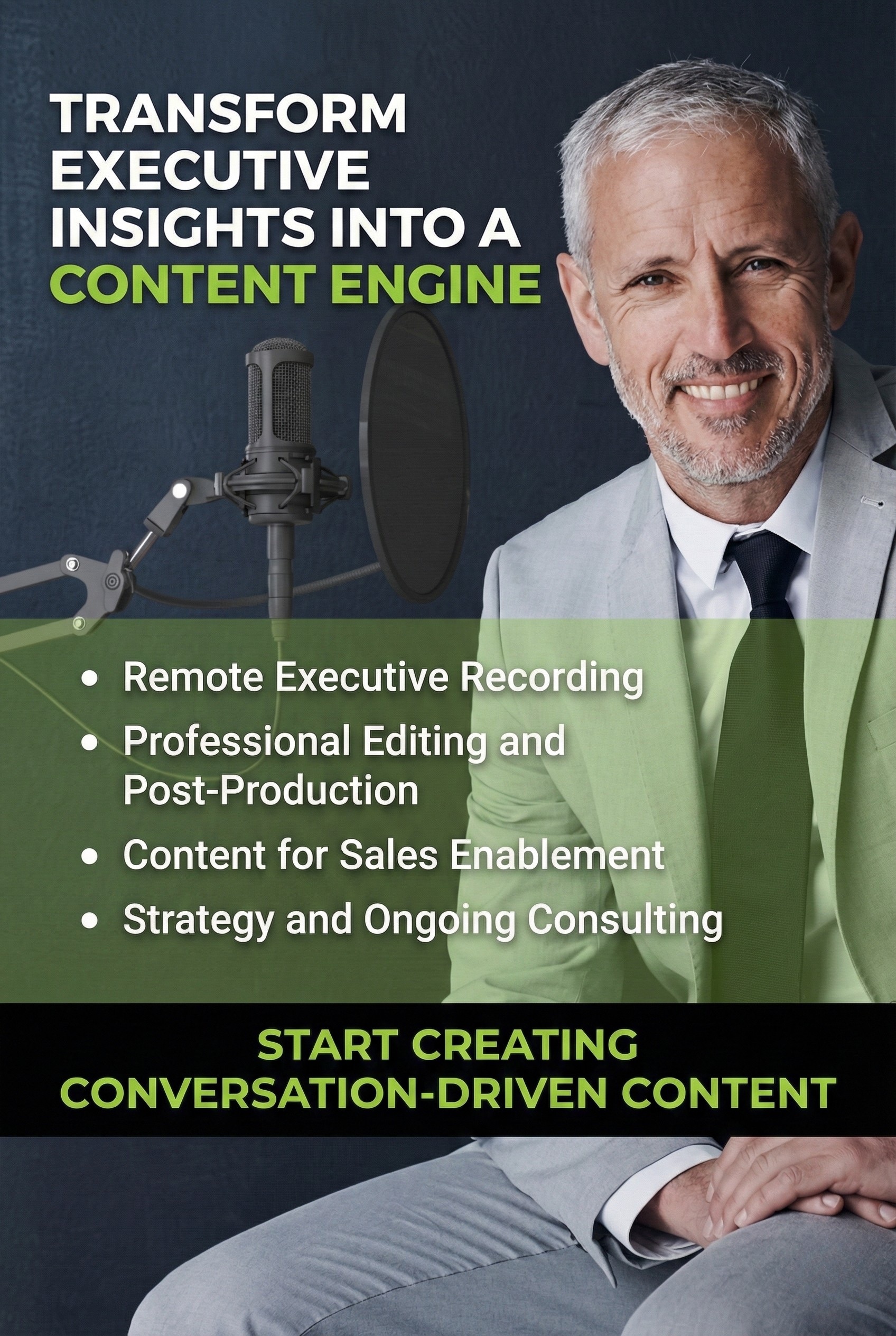What Is a Digital Content Hub?
A content hub is a digital destination where visitors can find a large array of branded, curated content of all different kinds. While many organizations rely on a blog or web content to fill this role, a content hub takes it a step further and unifies all your multimedia content across all platforms into one easy-to-access space.
Your digital presence is a key vehicle in driving your business success, but does your content strategy do enough to support your digital presence? To maximize your digital reach, you need a content hub as a centralized location where you can keep a wealth of information to reinforce your brand’s message.
This allows you to not only lead prospective buyers towards a wealth of information about your brand but also can capture additional leads in the early phases of the sales funnel and buyer’s journey.
Unlike your blog that typically captures a limited scope of a prospective audience, your content hub can contain all that content plus anything else generated by or about your organization.
For example, when users visit your content hub for your weekly company podcast, they can easily be introduced to similar content that they may enjoy within your ecosystem. This synergy between multiple content types not only serves to engage current users better but also casts a wider net for attracting those that may be new to your brand.
Why Does Your Company Need a Digital Content Hub?
With the importance of brand recognition and loyalty in today’s world and its increasingly prevalent ties to content, every company needs to be a media company in some ways. In almost any industry, if you aren’t constantly focused on establishing your brand, you’re falling behind the competition.
Just updating a blog may help, but a centralized headquarters for your curated content can magnify the effect of your content efforts in quite a few ways.
Maximize the Use of Content
Having a unified content hub gives you unique ways to offer content in whatever form a user prefers. While engaging video content is typically the most effective go-to method for getting through to the largest chunk of the audience, with a digital content hub you can conveniently point users to similar content in text or audio form if they prefer, as well without the hassle of changing platforms.
This means that your content is not only more effective at communication, but also that your content stretches further. Having one unified ecosystem to bring users to your content means that they will always be able to select the best content for them that you have available.
Reinforce Brand Messaging
In your digital content hub, you control the user experience. You can control what they are recommended and how they view your platform, and more importantly, you control the content and messaging.
Your digital content hub can serve as a valuable way to adapt messaging to new strategies in one centralized platform, or to serve as the backbone of consistency for your brand message since all other content can bring users back to your hub.
What Does a Typical Content Hub Consist Of?
A digital content hub can be tailored to the needs of your brand, and they often take wildly different forms depending on the needs of a specific organization and its content strategy. This adaptability is one of the inherent advantages of digital content hubs. A blog is just a blog, but a digital content hub can actually feel like a natural home for your company.
Types of Content for a Content Hub
- Video
- Audio – Podcasts and Sound bytes
- Written Content
- Product Demonstrations
- Live Event Broadcasts
Content Hub Examples
Many companies have had huge success with incredibly unique content hubs. These will always still fulfill the fundamental definition of being centralized resources populated by branded and curated content, but each has evolved independently based on the brand identity of each organization.
Goldman Sachs: Insights
The Goldman Sachs digital content hub reads like an authoritative financial journal and is full of information from experts. With many daily business podcasts, blog articles, case studies, and infographics, Insights has positioned itself as an authoritative source that is often cited for expert testimonials in other content across the internet.
Google: Think With Google
Google’s digital content hub is an excellent example of utilizing every benefit that content hubs can offer. Most marketers are working with Google these days, and by providing data and insight throughout their content hub, Google has built a community of professionals within their branded ecosystem.
Google frequently updates the content they curate on the hub based on user feedback with articles and video podcasts featuring top experts in their field, which only further bolsters the feeling of community on the site. The hub contains any kind of content you could imagine, all in one easy-to-access place entirely within Google’s branded and curated hub.
Etsy: Etsy Journal
Etsy Journal is a more traditional approach to a content hub, yet at the same time on the cutting edge of modern marketing techniques. Etsy has designed its digital content hub to feel almost like a quaint catalog. It’s packed full of articles featuring great ideas for things like decorating and cooking, and yes, nearly everything referenced is purchasable in an Etsy shop.
They feature video how-to content, and interviews from artists and designers frequently, and even showcase Etsy shops and items that present opportunities for increased engagement. Etsy has designed a digital content hub that not only synergizes perfectly with its brand identity, but also promotes better engagement from both creators and clients.
Demandbase: Demandbase TV
Demandbase has another unique example of a content hub, in which they’ve themed it around the very high-engaging video content that is the center of their company’s strategy.
The hub contains plenty of other types of media, but the emphasis on video content not only fits the brand’s messaging but also creates a high engagement hub that feels more like a streaming service than a company’s branded content.
Demandbase utilizes this resource to its full potential by using it both to share marketing advice and branded content from their own ecosystem, but also to feature the content of partners and clients. This increases their chance of exposure from other audiences while their digital content hub continues to grow.
How To Create Your Content Hub
Since digital content hubs can be so diverse in the forms they take, designing one is a process that really allows you to be creative and customize a solution that’s perfect for your brand. Creating your company’s ideal content hub may be an entirely different process than another company may go through, but it will still follow the same general steps even if you end with a different result.
Step 1: Gather and Categorize Content
As you gather a collection of branded content that you can curate on a content hub, categorize it as thoroughly as possible. If you are going to utilize your content hub to its full potential, how much content it contains will increase rapidly over time. You need a solid organizational structure to ensure that it’s easy and intuitive for users to navigate.
Participants: Make sure both your Content Creators and Marketing Strategy team are on board for this phase. Think about the content created by all departments – from product marketing, sales, and event managers.
Step 2: Design Your Digital Content Hub
This is where a lot of company’s content hubs start looking wildly different from others. Put some thought into this stage as far as the layouts, structure, and aesthetics of your hub.
Your digital content hub is a core part of your brand image, and you should do everything possible to design something that emphasizes your authority and professionalism, while also accentuating what makes your brand unique.
Participants: This is where your website and design team take the lead. Help them to understand the types of content you would like to display and how you want it delivered to your audience.
Step 3: Structure for Your Needs
Just like a normal company website or blog, your content hub will need to be structured so that it’s simple for users to access the content that they want. This is where you can really control the user experience. Your landing pages and linking structure can drive leads to the content you want and feature the content that makes your brand shine the most.
Participants: Web Development (not design) becomes crucial at this stage. Having multimedia content on a website requires specific knowledge of how to deliver this content without slowing down the site. SEO is also crucial at this stage to make sure that your content is discoverable once posted.
Step 4: Regularly Add Quality Content
If you want users to engage with your brand, they need something to engage with. A content hub makes it easier to get and hold your audience’s attention, but you have to provide the content.
With a digital content hub though, that content can be anything that reinforces your brand’s message. Your content hub could feature key social media mentions, your video and podcast content, editorials, and behind-the-scenes content with experts on your team, or anything else that your audience would love.
The Wrap
While blogs and web content are necessary steps of a sound content marketing strategy, you need more than just lists of content — you need to gather your content for easy accessibility, visibility, and engagement.
Continually populating your content hub with quality content expands your reach at bringing users into your ecosystem and also further builds your rapport with your existing audiences over time.
Your digital content hub should grow and evolve over time, becoming a more engaging reflection of your brand identity as your company’s home in the digital world.

How Much Does it Cost to Hire a Podcast Production Company?
A quick breakdown of what it should cost to hire a podcast production company to help you with your podcast production and promotion.

36 Video and Podcast Content Frequently Asked Questions
Expert answers to remote podcast and video production questions. How remote recording works, options for support, pricing, ROI, and analytics.

AI + Human Powered Content Marketing: Speed Without the AI Slop
FAST, CHEAP, and GOOD. You can have them all. Speed keeps coming up in client conversations, and for good reason. The meaning of speed has changed. Fast used to mean









